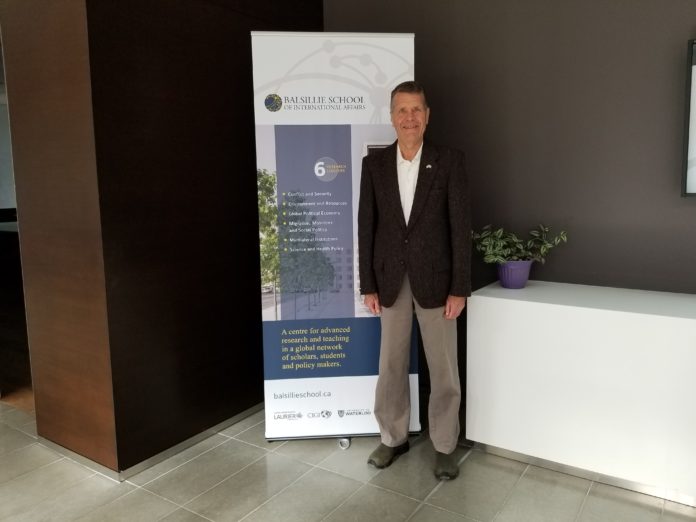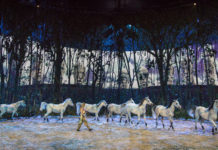“There’s a long history of Canada and the United States working together on the Great Lakes,” said Dr. John Hartig, the newest Fulbright Canada Research Chair in Governance at the Balsillie School of International Affairs.
Formerly the Refuge Manager of the Detroit River International Wildlife Refuge — the only of its kind in North America — Hartig was officially instated as Research Chair in early September, and will remain with Balsillie for a total of six months.
Professionally-trained in biology, aquatic biology, and limnology both Hartig’s research and experience in the field is extensive. However, no area caught the Michigan native’s interest quite like the freshwaters of Canada and the US.
“Just like most people… my parents took me to the Great Lakes,” said Hartig, recalling the roots of his activism. “We vacationed there and I loved the outdoors.”
Far from idyllic however, Hartig’s youth saw difficult times for local ecosystems like these.
“When I was growing up in the 1960s … there were rivers that were catching on fire,” he said, citing the 1968 burning of Michigan’s many-branched Rouge River, then one of the most heavily-polluted watersheds in the area.
“I couldn’t understand why that would occur,” Hartig added.
Now, after years of experience across government and non-profit sectors, this new position was a “logical” next step, said Hartig.
In the coming months, Hartig will continue work in support of the International Joint Commission of Canada and the United States, which serves to resolve disputes regarding transboundary bodies of water; most notably, the Great Lakes.
Guided by the 1909 Boundary Waters Treaty, the group endeavours to identify and remediate areas of ecological concerns, as well as facilitate international cooperation in management efforts.
“Over time, they’ve identified the most polluted areas of the Great Lakes,” Hartig said of the commission’s work. “Back in 1985, they came up with a new program that was based on an ecosystems approach … where you account for the inter relationships between air, water, and land … and then you also involve all user groups in matchments.”
“So its a bottom-up program,” he said.
In the 32 years since initiating the approach, according to Hartig, a great deal has been accomplished already.
“It is unbelievable to see in my lifetime … the environmental improvement and the ecological revival is truly amazing,” he said, citing the incredible comeback story of the Detroit river, which has seen the return of familiar characters like Bald Eagles, Peregrine Falcons, Beavers, and countless fish species.
However, while progress such as these has been remarked throughout a variety of ecosystems, Hartig’s work is far from finished. Specifically of his work at Balsillie over the coming months, the Fulbright researcher will “be working with a whole series of colleagues in Canada and the United States to compile data on what has been achieved in these areas of concerns and what have we learned from that [to ask] ‘where to we do we need to go from here?’”
Of this direction, Hartig noted in particular that a majority of the identified areas of concern are on the fringe of industrial areas and cities, and as a result, are accompanied by what he refers to as “legacy pollution,” embedded over many years in things like contaminated sediment.
In spite of their incredible impact, Hartig nonetheless believes highly-populated metropolitan areas such as these can yet be part of the solution.
“Right now, 80 per cent of all people in Canada and the United States live in urban areas,” Hartig said, sharing with Imprint his hope that these areas could be home to the next generation of “conservationists and sustainability entrepreneurs.”
In terms of Hartig’s own pursuits during his time at Balsillie, the coming months will see a variety of publications, including a special edition of the peer-reviewed Aquatic Ecosystem Health and Management Society due summer 2018, and a book addressing similar topics in early 2019.
“These kinds of stories are not just important for the people who care about you know, Hamilton Harbour, and Detroit River, and Toronto Harbour,” said Hartig of these works. “It’s important throughout the world so that people in other countries can learn from some of the mistakes we’ve made and some of the good things we’ve done.”
Hartig also looks forward to sharing his message in an event to be held as part of the Water Institute’s WaterTalks lecture series Nov. 30 in the Davis Centre.
































